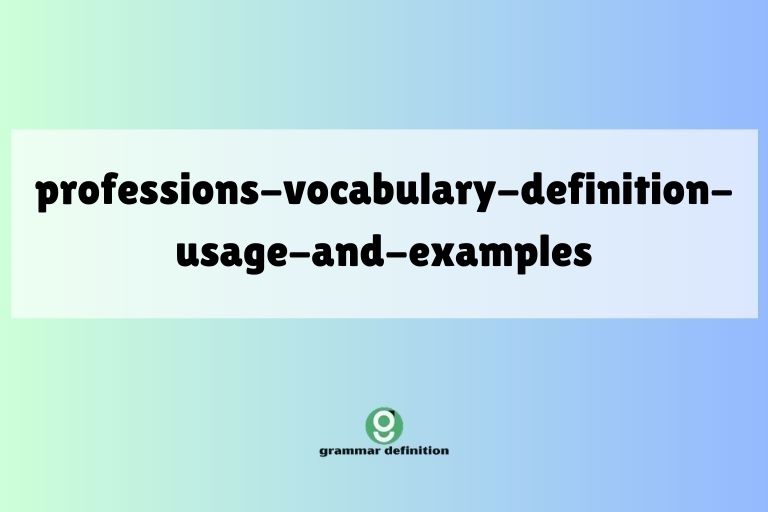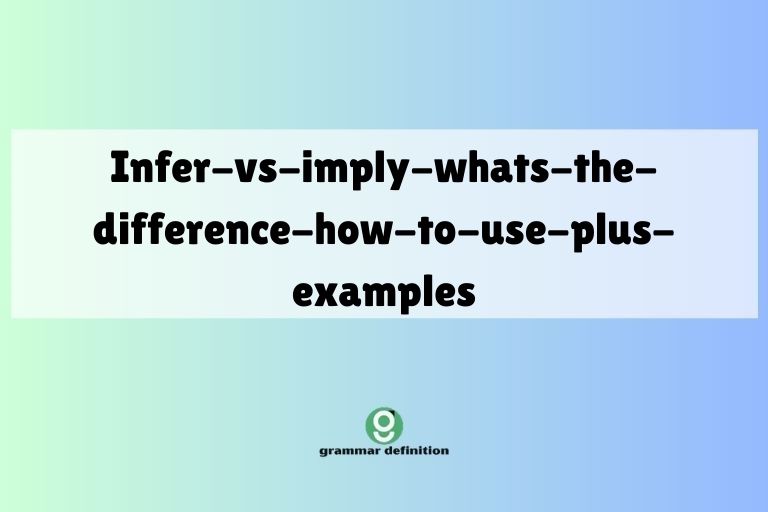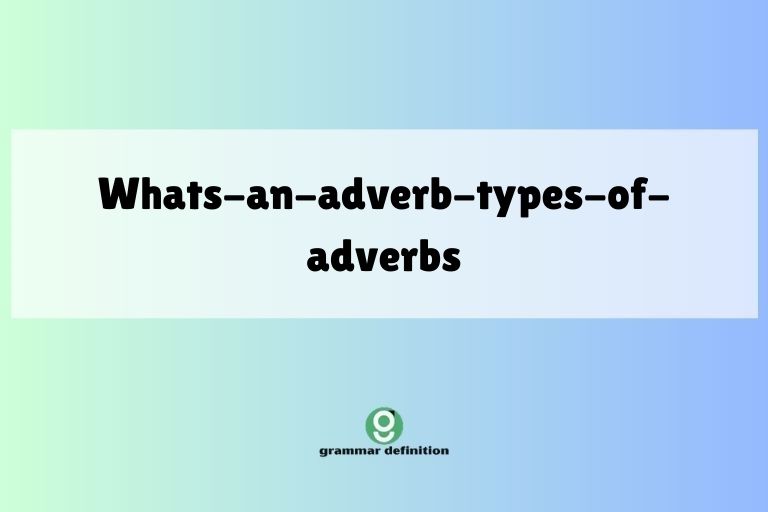Similes For Work: Enhancing Workplace Communication

Understanding and using similes effectively can significantly enhance communication in the workplace. Similes, a type of figurative language, allow us to draw comparisons between seemingly unrelated things, making our descriptions more vivid, engaging, and easy to understand.
This article provides a comprehensive guide to using similes in a professional context, covering everything from their basic definition and structure to practical examples and common mistakes. Whether you are a seasoned professional or just starting your career, mastering the art of using similes can help you communicate more effectively, build stronger relationships, and achieve your professional goals.
This guide is designed for anyone who wants to improve their communication skills, including students, professionals, managers, and leaders. By understanding the nuances of similes and how to use them appropriately, you can elevate your writing, presentations, and everyday conversations in the workplace.
Table of Contents
- Definition of Similes
- Structural Breakdown of Similes
- Types and Categories of Similes
- Examples of Similes in Work Contexts
- Similes for Describing Productivity
- Similes for Describing Teamwork
- Similes for Describing Leadership
- Similes for Describing Challenges
- Similes for Describing Success
- Usage Rules for Similes
- Common Mistakes When Using Similes
- Practice Exercises
- Advanced Topics
- Frequently Asked Questions
- Conclusion
Definition of Similes
A simile is a figure of speech that directly compares two different things using the words “like” or “as.” The purpose of a simile is to create a vivid image or to emphasize a particular quality of one of the things being compared. Similes are commonly used in both written and spoken language to make descriptions more interesting and understandable. They help to clarify complex ideas by relating them to something more familiar.
In essence, a simile bridges the gap between the known and the unknown, allowing your audience to grasp a concept more easily. For instance, saying “The project was as challenging as climbing Mount Everest” immediately conveys the difficulty of the project in a relatable and impactful way.
Similes are distinct from metaphors. While both are figures of speech that make comparisons, a simile explicitly uses “like” or “as,” whereas a metaphor implies the comparison without these words.
For example, a simile might say, “He is as brave as a lion,” while a metaphor would say, “He is a lion.” The key difference lies in the directness of the comparison.
Structural Breakdown of Similes
The basic structure of a simile includes three main components:
- The subject: The thing being described.
- The comparison word: Either “like” or “as.”
- The object of comparison: The thing the subject is being compared to.
The formula can be represented as: Subject + Comparison Word + Object of Comparison. For example, in the simile “Her ideas were as clear as crystal,” “her ideas” is the subject, “as” is the comparison word, and “crystal” is the object of comparison.
This structure ensures that the comparison is explicit and easily recognizable.
Understanding this structure is crucial for creating effective similes. A well-constructed simile not only makes the description more vivid but also ensures that the comparison is logical and relevant.
A weak or illogical simile can confuse the audience and detract from the overall message.
Consider the following examples to further illustrate the structural breakdown:
- The deadline loomed like a dark cloud.
- His determination was as strong as steel.
- The new software ran like a well-oiled machine.
Types and Categories of Similes
While all similes share the same basic structure, they can be categorized based on their function or the type of comparison they make. Here are some common categories:
Descriptive Similes
These similes are used to describe a quality or characteristic of the subject. They often focus on sensory details, such as appearance, sound, or feel.
For example, “The office was as quiet as a library” uses the quietness of a library to describe the office environment.
Explanatory Similes
These similes are used to explain or clarify a concept by comparing it to something more familiar. They help the audience understand complex ideas by relating them to something they already know.
For example, “The project management software works like a GPS, guiding you through each step” clarifies the function of the software.
Emphasizing Similes
These similes are used to emphasize a particular aspect of the subject, often to create a stronger emotional impact. They draw attention to a specific quality or characteristic.
For example, “The pressure was as intense as a pressure cooker” emphasizes the high level of stress.
Humorous Similes
These similes are used to add humor or levity to a situation. They often involve unexpected or absurd comparisons.
For example, “He multitasks like a one-armed juggler” adds a humorous touch to the description of his multitasking abilities.
Examples of Similes in Work Contexts
Similes can be used in various work-related contexts to enhance communication and make descriptions more engaging. Here are several examples categorized by common workplace scenarios.
Similes for Describing Productivity
These similes illustrate how effectively someone or something is performing.
The following table provides examples of similes used to describe productivity in various work scenarios:
| Simile | Context |
|---|---|
| She works like a bee, always busy and productive. | Describing a highly efficient employee. |
| His output is as consistent as a metronome. | Highlighting reliability in task completion. |
| The team completed the project as quickly as a cheetah. | Emphasizing speed and efficiency in project completion. |
| He manages his time like a seasoned conductor leading an orchestra. | Illustrating excellent time management skills. |
| The new software runs like a well-oiled machine. | Describing the smooth and efficient operation of software. |
| Her productivity is as sharp as a tack. | Emphasizing the high level of efficiency. |
| He churns out reports like a printing press. | Describing someone who produces a lot of written work quickly. |
| She handles tasks as smoothly as a figure skater on ice. | Highlighting grace and efficiency in task management. |
| His efficiency is like a finely tuned engine. | Describing optimal performance in a technical context. |
| The team worked together as seamlessly as clockwork. | Emphasizing the smooth and coordinated effort of the team. |
| He tackles problems like a surgeon, precise and effective. | Describing a methodical and efficient problem-solver. |
| Her work ethic is as strong as an ox. | Highlighting a strong and unwavering work ethic. |
| He completes tasks as effortlessly as a bird flies. | Emphasizing the ease and efficiency with which he works. |
| The system processes data like a supercomputer. | Describing the rapid processing speed of the system. |
| Her focus is as intense as a laser beam. | Highlighting exceptional concentration and focus. |
| He works through his to-do list like a hot knife through butter. | Describing how easily and quickly he completes his tasks. |
| She manages multiple projects as deftly as a chef handles knives. | Emphasizing her skill and precision in project management. |
| His speed is as impressive as a race car driver. | Highlighting impressive speed in task completion. |
| The assembly line runs as smoothly as a river. | Describing the continuous and efficient flow of the assembly line. |
| He operates with the precision of a Swiss watch. | Emphasizing the accuracy and reliability of his work. |
| Her attention to detail is like an eagle’s eye. | Highlighting her sharp and keen observation skills. |
| He handles pressure as calmly as a seasoned pilot. | Describing his ability to remain composed under stressful conditions. |
| The team’s collaboration is as synchronized as a dance. | Emphasizing the harmonious and coordinated teamwork. |
| He solves problems as quickly as a computer algorithm. | Highlighting his fast and efficient problem-solving skills. |
| Her energy level is like a perpetual motion machine. | Describing her seemingly endless energy and enthusiasm. |
| He navigates complex situations as skillfully as a chess master. | Emphasizing his strategic thinking and problem-solving abilities. |
| The project progressed as steadily as a train on its tracks. | Describing the consistent and reliable progress of the project. |
| Her performance is as reliable as the sunrise. | Highlighting her consistency and dependability. |
Similes for Describing Teamwork
These similes illustrate how well a team collaborates and functions together.
The following table provides examples of similes used to describe teamwork in various work scenarios:
| Simile | Context |
|---|---|
| The team works together like a well-oiled machine. | Describing a highly efficient and coordinated team. |
| Their collaboration is as smooth as butter. | Highlighting seamless and effortless teamwork. |
| They communicate like they’re all on the same wavelength. | Emphasizing strong and intuitive communication within the team. |
| The team functions as harmoniously as a choir. | Illustrating the balanced and cooperative nature of the team. |
| Their synergy is like a perfectly synchronized dance. | Describing the elegant and efficient collaboration of the team. |
| They support each other like pillars holding up a roof. | Emphasizing the strong support system within the team. |
| The team’s dynamics are as fluid as water. | Describing the adaptable and flexible nature of the team. |
| They solve problems together like pieces of a puzzle fitting perfectly. | Highlighting the collaborative problem-solving approach. |
| Their teamwork is as solid as a rock. | Describing the reliability and strength of their collaboration. |
| The team operates as efficiently as a pit crew at a race. | Emphasizing speed and coordination in their teamwork. |
| They complement each other like peanut butter and jelly. | Describing how well the team members’ skills and personalities fit together. |
| Their communication flows as freely as a river. | Highlighting the open and easy communication within the team. |
| The team’s unity is as strong as a fortress. | Describing the unbreakable bond and solidarity among team members. |
| They work in sync like a flock of birds flying together. | Emphasizing the coordinated and harmonious nature of their work. |
| Their collaboration is as natural as breathing. | Describing the effortless and intuitive teamwork. |
| The team’s spirit is as bright as sunshine. | Highlighting the positive and energetic atmosphere within the team. |
| They share ideas like they’re sharing a meal at a family table. | Emphasizing the open and inclusive exchange of ideas. |
| Their cooperation is as smooth as silk. | Describing the seamless and elegant teamwork. |
| The team’s commitment is as steadfast as a lighthouse. | Highlighting the unwavering dedication of the team members. |
| They support each other as naturally as trees in a forest. | Emphasizing the organic and supportive environment within the team. |
| Their coordination is like a perfectly timed symphony. | Describing the harmonious and precise collaboration of the team. |
| The team’s output is as plentiful as a harvest. | Highlighting the abundant results of their teamwork. |
| They navigate challenges together like sailors on a ship. | Emphasizing their collaborative approach to overcoming obstacles. |
| Their collective knowledge is like a vast library. | Describing the extensive and diverse expertise within the team. |
| The team’s growth is as steady as a plant reaching for the sun. | Highlighting the consistent progress and development of the team. |
| They adapt to changes as gracefully as dancers on a stage. | Emphasizing their flexibility and adaptability in dynamic situations. |
| Their shared vision is as clear as a mountain stream. | Describing the unified and focused direction of the team. |
Similes for Describing Leadership
These similes illustrate the qualities and actions of effective leaders.
The following table provides examples of similes used to describe leadership in various work scenarios:
| Simile | Context |
|---|---|
| He leads the team like a seasoned captain guiding a ship. | Describing a leader who provides clear direction and guidance. |
| Her vision is as clear as a crystal ball. | Highlighting a leader with a strong and insightful perspective. |
| He motivates his team like a coach inspiring athletes. | Emphasizing a leader who encourages and empowers their team. |
| She handles crises like a conductor leading an orchestra through a storm. | Illustrating a leader who maintains composure and control in difficult situations. |
| His decisions are as sharp as a surgeon’s scalpel. | Describing a leader who makes precise and effective choices. |
| She inspires her team like a beacon of light. | Highlighting a leader who motivates and guides their team. |
| He supports his employees like a sturdy oak tree. | Describing a leader who provides strong and reliable support. |
| Her leadership style is as flexible as bamboo. | Emphasizing a leader who adapts to changing circumstances. |
| He empowers his team like a gardener nurturing plants. | Describing a leader who fosters growth and development. |
| She navigates complex situations like a seasoned diplomat. | Highlighting a leader who handles challenges with skill and tact. |
| His guidance is as steady as a compass. | Describing a leader who provides consistent and reliable direction. |
| She communicates with the clarity of a bell. | Highlighting a leader who expresses ideas clearly and effectively. |
| He protects his team like a lion guarding its pride. | Describing a leader who fiercely advocates for their team. |
| Her strategic thinking is as profound as a philosopher’s. | Emphasizing a leader who possesses deep and insightful strategic abilities. |
| He fosters collaboration like an architect designing a bridge. | Describing a leader who builds strong connections and partnerships. |
| She approaches problems with the precision of an engineer. | Highlighting a leader who is methodical and detail-oriented. |
| His influence is as pervasive as a network of roots. | Describing a leader whose impact is far-reaching and profound. |
| She motivates her team as effectively as a rising tide lifts all boats. | Emphasizing a leader who elevates the entire team to success. |
| His leadership is as constant as the North Star. | Describing a leader who provides unwavering guidance and direction. |
| She leads with the wisdom of an owl. | Highlighting a leader who is knowledgeable and perceptive. |
| He cultivates talent like a master craftsman. | Describing a leader who develops and hones the skills of their team. |
| Her vision for the future is as expansive as the horizon. | Emphasizing a leader who has a broad and forward-thinking perspective. |
| He inspires confidence like a superhero. | Describing a leader who instills trust and belief in their team. |
| She empowers her team to soar like eagles. | Highlighting a leader who encourages independence and high achievement. |
Similes for Describing Challenges
These similes illustrate the nature and impact of difficulties encountered in the workplace.
The following table provides examples of similes used to describe challenges in various work scenarios:
| Simile | Context |
|---|---|
| The project was as challenging as climbing Mount Everest. | Describing a project with significant difficulties. |
| The deadline loomed like a dark cloud. | Highlighting the pressure and stress of an approaching deadline. |
| Navigating the bureaucracy was like wading through treacle. | Emphasizing the slow and cumbersome nature of dealing with bureaucracy. |
| Solving the problem was like untangling a ball of yarn. | Illustrating the complexity and difficulty of resolving an issue. |
| The market downturn hit the company like a tsunami. | Describing the sudden and devastating impact of a market downturn. |
| The competition is as fierce as a pack of wolves. | Highlighting the intense and aggressive nature of the competition. |
| The workload felt like carrying the weight of the world. | Emphasizing the overwhelming burden of responsibilities. |
| The meeting was as productive as watching paint dry. | Describing a meeting that was dull and unproductive. |
| The budget cuts felt like a punch to the gut. | Highlighting the painful and damaging impact of budget cuts. |
| The technical issue was as stubborn as a mule. | Describing a problem that was difficult to resolve. |
| Dealing with the difficult client was like walking on eggshells. | Emphasizing the delicate and cautious approach required. |
| The project delays stretched on like an endless road. | Describing the prolonged and frustrating nature of the delays. |
| The communication breakdown was like a wall between departments. | Highlighting the barrier created by poor communication. |
| The pressure to succeed felt like a vise grip. | Emphasizing the intense and constricting pressure. |
| The new regulations were as confusing as a maze. | Describing the complexity and difficulty of understanding the regulations. |
| The crisis unfolded like a slow-motion train wreck. | Highlighting the inevitable and disastrous nature of the situation. |
| The office politics were as treacherous as a minefield. | Emphasizing the danger and risk involved in navigating office politics. |
| Trying to innovate in the company was like pushing a boulder uphill. | Describing the difficult and resistant environment for innovation. |
| The economic uncertainty hung over the industry like a fog. | Highlighting the pervasive and obscuring nature of the uncertainty. |
| The task was as daunting as facing a dragon. | Emphasizing the fear and intimidation associated with the task. |
| The learning curve was as steep as a cliff. | Describing the difficulty of acquiring new skills or knowledge. |
| The problem was as thorny as a rose bush. | Highlighting the complexity and potential for pain. |
| The resistance to change was like a brick wall. | Emphasizing the strong and unyielding opposition. |
| The market volatility was as unpredictable as the weather. | Describing the erratic and uncertain nature of the market. |
Similes for Describing Success
These similes illustrate the achievements and positive outcomes in the workplace.
The following table provides examples of similes used to describe success in various work scenarios:
| Simile | Context |
|---|---|
| The project was as successful as a rocket launch. | Describing a project that achieved great success. |
| Their sales figures soared like an eagle. | Highlighting a significant increase in sales. |
| The new product was as popular as free coffee. | Emphasizing the widespread appeal of the product. |
| The company’s growth was like a blooming flower. | Illustrating the positive and flourishing development of the company. |
| The marketing campaign was as effective as a well-aimed arrow. | Describing a campaign that hit its target audience perfectly. |
| The merger was as smooth as silk. | Highlighting the seamless and successful integration of two companies. |
| The team’s performance was as brilliant as fireworks. | Emphasizing the spectacular and impressive achievements of the team. |
| The innovation was as groundbreaking as the invention of the wheel. | Describing a truly revolutionary and transformative innovation. |
| The customer satisfaction was as high as a kite. | Highlighting the exceptional level of customer satisfaction. |
| The deal closed as smoothly as a zipper. | Describing the effortless and efficient completion of a deal. |
| The solution was as clear as day. | Highlighting a solution that was obvious and effective. |
| The partnership was as strong as a bridge. | Describing a reliable and supportive collaboration. |
| The campaign went viral like wildfire. | Highlighting the rapid and widespread popularity of the campaign. |
| Their teamwork was as strong as steel. | Describing a resilient and effective collaboration. |
| The profits rolled in like a river. | Highlighting the abundant financial success. |
| The changes took effect as quickly as a snap of the fingers. | Highlighting the immediate and effective implementation of changes. |
| The outcome was as sweet as honey. | Describing a highly satisfactory and rewarding result. |
| The presentation landed as powerfully as a knockout punch. | Emphasizing the impactful and persuasive nature of the presentation. |
| The company’s reputation grew like a snowball rolling downhill. | Highlighting the rapid and significant enhancement of the company’s reputation. |
| The venture was as fruitful as a well-tended garden. | Describing a project that yielded abundant and positive results. |
| The team’s morale was as buoyant as a balloon. | Highlighting the positive and enthusiastic atmosphere within the team. |
| The new strategy worked as effectively as a charm. | Describing a strategy that produced the desired results. |
| The company’s standing is as secure as a fortress. | Highlighting the reliable and robust position of the company. |
| The product launch was as dazzling as a star. | Describing a product that made a significant and positive impact. |
Usage Rules for Similes
To effectively use similes, it’s essential to follow certain rules:
- Ensure the comparison is clear and relevant: The object of comparison should be easily understood and logically related to the subject. Avoid comparisons that are too obscure or confusing.
- Use “like” or “as” correctly: Always include one of these comparison words to signal that you are making a simile.
- Avoid clichés: Overused similes can sound unoriginal and dull. Try to come up with fresh and creative comparisons.
- Consider your audience: The effectiveness of a simile depends on whether your audience can understand and relate to the object of comparison.
- Maintain consistency: Ensure that the simile aligns with the overall tone and style of your writing or speech.
For instance, instead of saying “He was as busy as a bee” (a cliché), you could say “He was as busy as a one-man band,” which is more original and engaging.
Common Mistakes When Using Similes
Here are some common mistakes to avoid when using similes:
| Mistake | Incorrect Example | Correct Example |
|---|---|---|
| Using a metaphor instead of a simile. | He is a lion in the meeting. | He is as brave as a lion in the meeting. |
| Using a cliché. | She was as quiet as a mouse. | She was as quiet as a shadow. |
| Making an illogical comparison. | The report was as heavy as a cloud. | The report was as dense as a textbook. |
| Using an obscure reference. | He was as fast as Hermes. | He was as fast as a race car. |
| Overusing similes. | The meeting was as long as a marathon. The speaker was as boring as watching paint dry. The ideas were as stale as old bread. | The meeting was long and the speaker uninspired. |
By being aware of these common mistakes, you can ensure that your similes are effective and enhance your communication.
Practice Exercises
Test your understanding of similes with these exercises.
Exercise 1: Identifying Similes
Identify the similes in the following sentences:
| Question | Answer |
|---|---|
| 1. The project was as complex as a Rubik’s Cube. | The project was as complex as a Rubik’s Cube. |
| 2. He is a dedicated employee. | No simile present. |
| 3. The new software runs like a dream. | The new software runs like a dream. |
| 4. Her ideas were innovative. | No simile present. |
| 5. The team worked together as harmoniously as a choir. | The team worked together as harmoniously as a choir. |
| 6. The deadline loomed. | No simile present. |
| 7. His presentation was as clear as crystal. | His presentation was as clear as crystal. |
| 8. She is a great leader. | No simile present. |
| 9. The company grew like a weed. | The company grew like a weed. |
| 10. He is a hard worker. | No simile present. |
Exercise 2: Completing Similes
Complete the following similes with an appropriate object of comparison:
| Question | Answer |
|---|---|
| 1. The meeting was as long as ______. | The meeting was as long as a movie. |
| 2. His explanation was as clear as ______. | His explanation was as clear as day. |
| 3. She works like ______. | She works like a machine. |
| 4. The project was as challenging as ______. | The project was as challenging as solving a puzzle. |
| 5. The team collaborated as smoothly as ______. | The team collaborated as smoothly as clockwork. |
| 6. His energy is like ______. | His energy is like a fire. |
| 7. Her focus is as sharp as ______. | Her focus is as sharp as a razor. |
| 8. The deadline is looming like ______. | The deadline is looming like a storm cloud. |
| 9. The market is as volatile as ______. | The market is as volatile as the weather. |
| 10. The success was as sweet as ______. | The success was as sweet as honey. |
Exercise 3: Creating Similes
Create your own similes for the following scenarios:
| Scenario | Possible Answer |
|---|---|
| 1. Describing a difficult task. | The task was as difficult as navigating a labyrinth. |
| 2. Describing a successful project. | The project was as successful as a well-executed symphony. |
| 3. Describing an efficient employee. | He works like a tireless robot. |
| 4. Describing a challenging market situation. | The market was as unpredictable as a rollercoaster. |
| 5. Describing effective teamwork. | They collaborated as seamlessly as dancers in a ballet. |
| 6. Describe a leader’s clear vision. | Her vision was as clear as a mountain spring. |
| 7. Describe a time-consuming process. | The process was as slow as molasses in winter. |
| 8. Describe an innovative idea. | The idea was as revolutionary as the printing press. |
| 9. Describe a stressful workplace. | The workplace was as tense as a drum. |
| 10. Describe a productive meeting. | The meeting was as productive as a brainstorming session. |
Advanced Topics
For advanced learners, consider these more complex aspects of similes:
- Extended Similes: These are similes that are developed over several sentences or paragraphs, providing a more detailed and nuanced comparison.
- Subverted Similes: These are similes that intentionally break the expected pattern or create an unexpected comparison for humorous or ironic effect.
- Cultural Context: Understanding the cultural context of similes is crucial, as some comparisons may not be universally understood or appreciated.
Exploring these advanced topics can further enhance your ability to use similes effectively and creatively.
Frequently Asked Questions
- What is the difference between a simile and a metaphor?
A simile uses “like” or “as” to make a direct comparison, whereas a metaphor implies a comparison without using these words. For
example, “He is as strong as an ox” (simile) versus “He is an ox” (metaphor).
- How can I avoid using clichés in my similes?
Try to think of unique and specific comparisons that are relevant to your subject. Brainstorm different possibilities and choose the one that is most original and fitting.
- Is it okay to use similes in formal writing?
Yes, but use them sparingly and ensure they are appropriate for the tone and audience. Overusing similes can make your writing seem less professional.
- How do I know if my simile is effective?
An effective simile should create a vivid image or make a clear comparison that enhances understanding. If your audience easily grasps the comparison and finds it engaging, the simile is likely effective.
- Can similes be used in presentations?
Absolutely! Similes can make your presentations more engaging and memorable. Use them to illustrate complex ideas or emphasize key points.
- How important is the context when using similes?
Context is crucial. The effectiveness of a simile depends on whether your audience can relate to the comparison being made. Consider their background, knowledge, and cultural understanding.
- What are some alternatives to using similes?
Alternatives include metaphors, analogies, anecdotes, and descriptive language. Varying your techniques can keep your writing fresh and engaging.
- How can I improve my ability to create effective similes?
Practice regularly, read widely, and pay attention to how other writers and speakers use similes. Experiment with different comparisons and ask for feedback from others.
- What role do similes play in persuasive writing?
Similes can make your arguments more compelling by creating vivid images and emotional connections with your audience. They can help to clarify complex ideas and make them more relatable.
- Are there any cultural considerations when using similes?
Yes, some comparisons may not be universally understood or appreciated. Be mindful of cultural differences and avoid using similes that could be offensive or confusing to your audience.
Conclusion
Mastering the art of using similes can significantly enhance your communication skills in the workplace. By understanding their structure, types, and usage rules, you can create vivid and engaging descriptions that resonate with your audience.
Whether you are describing productivity, teamwork, leadership, challenges, or success, similes can help you convey your message more effectively and build stronger relationships with your colleagues. Remember to practice regularly, avoid common mistakes, and always consider your audience to make the most of this powerful figure of speech.
With consistent effort, you can elevate your writing, presentations, and everyday conversations, achieving greater clarity and impact in all your professional interactions.






